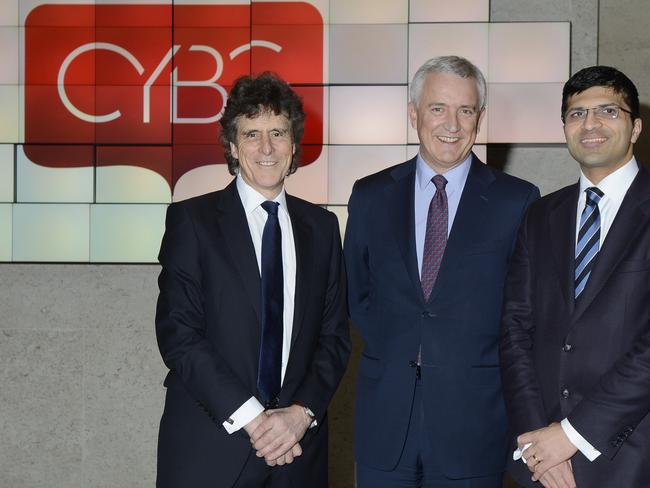NAB’s UK spin-off starts to walk the sales talk
Clydesdale Bank investors should be encouraged by signs that the group’s growth plans are starting to take shape.

CYBG’s first result since it was demerged in early February, however, suggests Duffy’s confidence that CYBG could generate growth at rates well above the UK system’s growth rate wasn’t just a sales pitch.
Overnight, CYBG announced its results for the half-year to March which, at face value, weren’t that impressive. Underlying pre-tax earnings of £107 million (about $218m) were down 4.2 per cent and statutory earnings were heavily down from £137m ($278m) to £36m ($73m).
The fall was, however, largely due to “conduct” charges relating to the miss-selling of payment protection insurance that has plagued not just CYBG but the broader UK banking system. NAB, of course, was forced to leave £1.7 billion of provisioning in the UK to meet future PPI payouts and CYBG has its own £1bn of provisions beyond the NAB indemnity.
What will be encouraging for the NAB shareholders who were given 75 per cent of CYBG when it was spun out — apart from a share price that has risen nearly 40 per cent for an increase in market capitalisation of about $1.2bn since CYBG was listed — is that the underlying trends in the group reflect Duffy’s ambitions.
CYBG, having shed its loss-riddled commercial property portfolio while still within NAB, has been re-positioned as a retail and small and medium-sized business lender. Duffy’s objectives are to grow the group’s mortgage book 40 to 50 per cent by 2020 and its SME loan book by 15 to 25 per cent over that period. He also wants to reduce the group’s cost-to-income ratio from 75 per cent to less than 60 per cent.
In the March half, mortgage lending was up 9.8 per cent on an annualised basis, SME lending 10 per cent and the cost-to-income ratio was 72 per cent. That growth wasn’t achieved by sacrificing margin, with the net interest margin stable at 2.25 per cent in the half.
Nor does it appear to have compromised asset quality to generate the above-system growth, with its credit quality metrics quite stable.
Moreover, where Duffy had foreshadowed full-year underlying costs of £762m, he is now targeting an underlying cost base of £730m as CYBG continues to shed employees and branches. The performance on costs was somewhat disguised by the £14m of new costs relating to CYBG’s newly-independent structure, but its underlying costs fell two per cent.
The remaking of CYBG is obviously in its earliest phase but Duffy, who achieved a major turnaround of Ireland’s Allied Irish Bank after it collapsed during the financial crisis and had to be bailed out by Irish taxpayers, is confident that the momentum in the business under what is effectively an entirely new team of senior managers is embedded.
If they can deliver on their promise, it would say something telling about the differences in focus and connection between having a local board and management and identity, with complete independence to act, and being a non-core asset owned and directed by a parent at the other end of the globe.
CYBG is an interesting player in the UK market, as a group with large regional market positions in the north of England and in Scotland but a relatively small national market share.
It regards itself as the largest of the spate of “challenger” banks that have emerged in the UK since the crisis and is a potential consolidator — or a target for consolidation — because, unlike most of its challenger peers, it has a quite new and significantly under-utilised technology platform that would offer leverage and scale benefits in an acquisition.
CYBG is solidly capitalised, with a common equity tier one ratio of 13.2 per cent, which may become relevant in the context of the imminent vote on whether Britain should exit the European Union. A vote for “Brexit” could cause significant turbulence in the UK economy and flow through to banks via its impact on both demand for credit and asset quality.
NAB shareholders who still have their CYBG shares would, however, be happy to this point that they retained them and, given the much cleaner and sharper performance emerging from the slimmed down and more focused NAB itself, that their core interest was distanced from the historically volatile and perennially disappointing UK banking exposures.



When CYBG chief executive David Duffy was promoting a very aggressive growth story last year, ahead of the bank’s demerger from National Australia Bank, there were some sceptics. The chequered history of what used to be known as the Clydesdale and Yorkshire banks didn’t engender confidence.